9 ways to lower your risk of diabetes
Find out how you can help prevent diabetes and prediabetes by making simple lifestyle changes.
Updated on March 19, 2024

Finding out you have borderline diabetes or prediabetes can be distressing. (Prediabetes means your blood sugar levels are higher than normal, but not quite high enough to be considered type 2 diabetes.)
There's an upside to receiving this news, though: It means there's time to make changes to your lifestyle to improve your blood sugar levels. Adopting new, healthier habits can help keep you from developing type 2 diabetes. That means you can avoid its complications, which may include heart disease, stroke, nerve damage, and more. Even small changes can make a big difference in your health. Here’s how to get started.

Eat More Fruits and Vegetables
Making fresh produce the main focus of your meals is not the easiest change to make overnight. But the more fruits and vegetables you can include in your diet, the more you can cut your diabetes risk. That's due in part to the added fiber you get from fruits and vegetables, which helps steady blood sugar. Adding greens to your diet—such as collard greens, kale, and spinach—is a healthy move. So is focusing on whole, raw fruits rather than fruit juice or canned or cooked fruits.
While starchy foods like potatoes, sweet potatoes, and peas are typically okay to eat, try to limit your portions, as they contain the kind of carbs that may raise blood sugar.
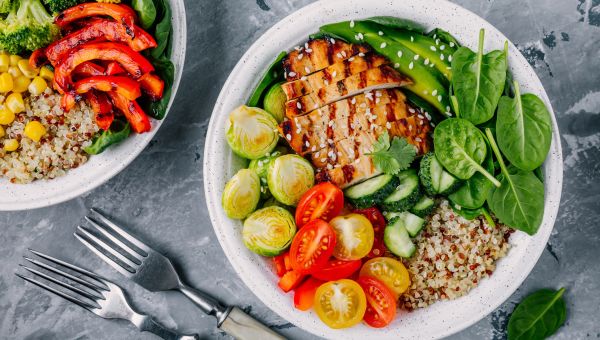
Put Meat in Its Place
Numerous studies have found that eating a diet high in animal protein—especially red meat—puts you at greater risk for developing diabetes. Yet for many Americans, a meat-based main course takes up half of a typical dinner plate.
To help lower diabetes risk, consider emphasizing more plant-based foods. To help understand portions, set aside at least half your plate for fruits and vegetables. The other half can be divided between a lean protein (like chicken, fish, or a plant-based option like tofu), and high-fiber starchy foods, such as whole-wheat pasta or brown rice. Replacing meat with plant-based proteins like beans or tofu can take some getting used to, but plant proteins can be just as filling and satisfying as meat when you prepare them with your favorite sauces and toppings.
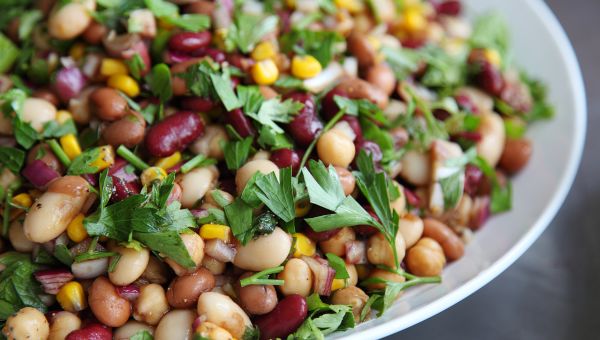
Keep the Fiber Coming
As you make changes to your meals, focus on fiber-rich foods. Your body doesn't absorb fiber, so it doesn’t cause your blood sugar levels to rise like it does when you eat other kinds of carbohydrates (carbs).
Whole grains are nutrient-rich, high in fiber, and they help keep your blood sugar levels steady. Just try to avoid white rice and refined pasta. Instead, go for items like brown rice, quinoa, and whole wheat pasta. Legumes (including lentils, peas, and garbanzo beans), are another great source of fiber, as are fruits and non-starchy veggies. Consider picking up leafy greens, broccoli, carrots, and fruits like apples, pears, and bananas on your next shopping trip.
The best way to change your fiber intake is slowly. If you make a big change quickly, it could lead to short-term digestive problems. Always stay hydrated (that means drinking plenty of water) to help fiber move through your system.

Skip Processed Meats
There’s no getting around it: As tasty as they may be, processed meats such as hot dogs, bacon, and sausage boost diabetes risk. They also fuel cancer and heart troubles, too. Instead, look for unprocessed or minimally processed sources of protein. These include legumes, poultry, fish, veggie burgers or—if you have a craving for beef—burgers made with extra-lean, grass-fed beef or lean ground turkey.

Move Your Body
One of the most effective ways to lower your risk of diabetes is to be physically active. Aim to get heart-healthy cardiovascular exercise at least 30 minutes a day, five days a week. (Cardiovascular exercise is the kind that increases your heart rate and helps you work up a sweat, like walking, jogging, hiking, or biking.) It's also good to do two sessions of strength training each week, too. That might be lifting weights, using resistance bands, or doing exercises using your own body weight, like push-ups, planks, and squats. Working out improves insulin sensitivity, which helps your body use blood sugar more efficiently and lowers your risk of diabetes.
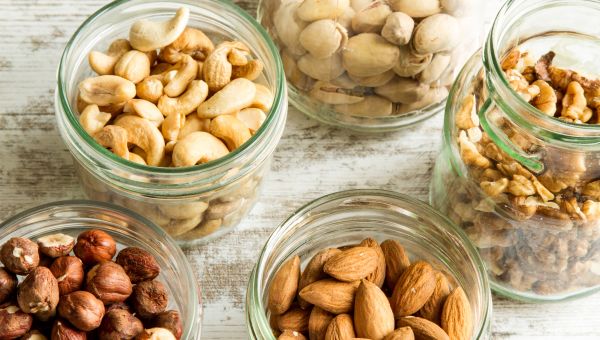
Consider a different kind of snack
When you're looking for something to munch on, it can be tempting to grab a bag of chips. As an alternative, consider snacking on nuts. Thought they cost a little more, just a handful of nuts can be more satisfying than a much larger serving of chips or crackers. Not only are they high in fiber, but nuts contain protein and healthful fats. These help fill you up faster and help your body absorb and use blood sugar more effectively. Since nuts have lots of calories (14 walnut halves have 185), stick with a small handful, or 1/4 cup. Try sprinkling them on salads, roasted vegetables, oatmeal, yogurt, or just snacking on them plain.

Reduce Stress
Living with high levels of stress can affect your blood sugar levels. Getting poor or insufficient sleep on a regular basis also heightens diabetes risk. The two issues feed into each other, too: High stress can worsen sleep, while poor sleep can increase stress.
It sounds easier than done to sleep better and stress less. But you can work on reducing stress in your daily life with some simple steps. Exercise is a great way to reduce stress and setting an earlier bedtime can help you get the rest you need. There are also a variety of stress-reduction techniques that you can do at home for free. Deep breathing is one. Meditation and yoga also help many people reduce their stress levels.
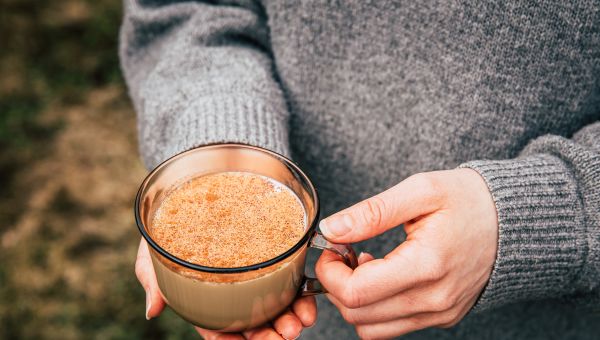
Cut Down on Sugar
Drinking just one can of soda each day adds about 40 extra grams of sugar to your diet. Other drinks, like fruit juices and coffee drinks, can also contain high amounts of the sweet stuff. Regularly consuming added sugar can increase your diabetes risk.
To help lower your risk, try to limit or avoid consuming sugar-sweetened drinks and keep an eye on your sugar intake in general. Cutting back on processed foods such as breakfast cereal, chips, cookies, and white bread is one good way to start. If you do enjoy baked goods and desserts, try to limit them to small portions or special occasions. Choose healthy snacks—like nuts, fresh fruits or vegetables, or chips or crackers made with whole grains—whenever possible.
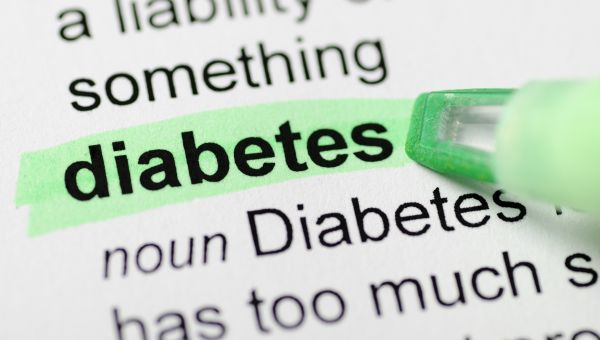
Know the Risk Factors
Although healthy lifestyle changes can go a long way toward preventing diabetes, it's important to be aware of risk factors you can't change, such as your family history and age. Make sure you keep doing all that you can to protect yourself from diabetes and its complications.
Worrying about your risk of diabetes can be stressful. Just remember that even small changes can have a big impact on lowering your risk.

Centers for Disease Control and Prevention. Prediabetes – Your Chance to Prevent Type 2 Diabetes. Page last reviewed December 30, 2022.
National Institute of Diabetes and Digestive and Kidney Diseases. Preventing Diabetes Problems. Accessed on April 21, 2023.
Centers for Disease Control and Prevention. Diabetes: Fiber: The Carb That Helps You Manage Diabetes. Last reviewed June 20, 2022.
Banaszak M, Górna I, Przysławski J. Non-Pharmacological Treatments for Insulin Resistance: Effective Intervention of Plant-Based Diets-A Critical Review. Nutrients. 2022 Mar 27;14(7):1400.
Gołąbek KD, Regulska-Ilow B. Dietary support in insulin resistance: An overview of current scientific reports. Adv Clin Exp Med. 2019 Nov;28(11):1577-1585.
American Diabetes Association. Myths about Diabetes. Accessed on April 21, 2023.
Adeva-Andany MM, González-Lucán M, Fernández-Fernández C, et al. Effect of diet composition on insulin sensitivity in humans. Clin Nutr ESPEN. 2019 Oct;33:29-38.
Chen Z, Zuurmond MG, van der Schaft N, et al. Plant versus animal based diets and insulin resistance, prediabetes and type 2 diabetes: the Rotterdam Study. Eur J Epidemiol. 2018 Sep;33(9):883-893.
Centers for Disease Control and Prevention. On Your Way to Preventing Type 2 Diabetes. Accessed on April 21, 2023.
Qian F, Riddle MC, Wylie-Rosett J, et al. Red and Processed Meats and Health Risks: How Strong Is the Evidence? Diabetes Care. 2020 Feb;43(2):265-271.
World Health Organization. Q&A - Cancer: Carcinogenicity of the consumption of red meat and processed meat. October 26, 2015.
Centers for Disease Control and Prevention. How much physical activity do adults need? Page last reviewed June 2, 2022.
American Diabetes Association. Blood Glucose and Exercise. Accessed July 10, 2023.
Nishi SK, Viguiliouk E, Kendall CWC, et al. Nuts in the Prevention and Management of Type 2 Diabetes. Nutrients. 2023 Feb 9;15(4):878.
US Department of Agriculture. Nuts, walnuts, English. April 1, 2019.
National Institute of Diabetes and Digestive and Kidney Diseases. The Impact of Poor Sleep on Type 2 Diabetes. March 17, 2021.
